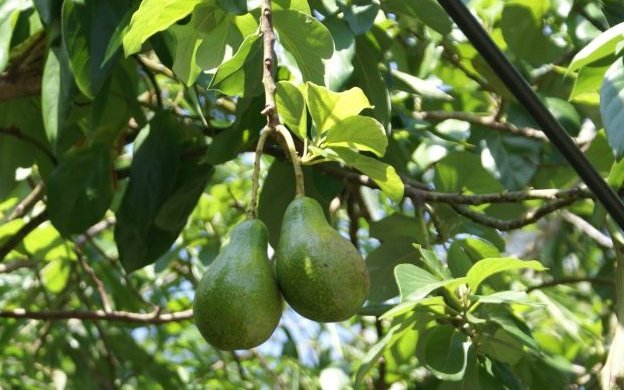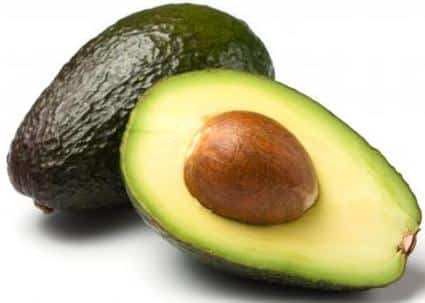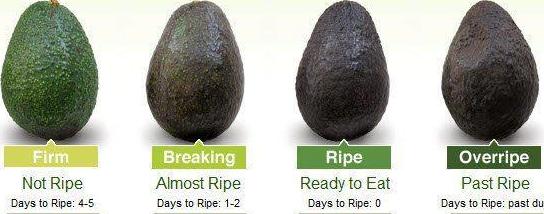Avocado Fruit Farming Guide:

Introduction of Avocado Fruit Farming:
Avocados are ancient fruits and originated from Central America and Mexico. These fruits are commonly called as “Butter Fruits” in India. Avocado is a tropical fruit and looks similar to pear fruit. These fruits are a good source of nutrients compared to other fruits. Avocados are existed since the 1900s in India and first introduced in the country’s west coast by way of Sri Lanka. Commercial cultivation of avocados is limited in India and mainly south Indian states produce avocados. Avocado fruits are mainly used as fresh fruit. They are also used in salads & sandwich fillings. Even though avocado farming is picking slowly in India, avocados cultivation has a good future in India. Generally, July through Sept is the time period to find avocados in the market.
Health Benefits of an Avocado Fruit:
Some of the health benefits of avocados are listed below.
- Avocados are healthy for the heart.
- Avocados are good for vision.
- Avocados are good for digestion.
- Avocados are a good source of fiber.
- Avocados are natural detoxification fruits.
- Avocados may help in preventing osteoporosis.
- Avocados may help in fighting against cancer.
- Avocados are good for pregnant women.
- Avocados may help in lowering the risk of depression.
- Avocados may help in protecting chronic diseases.
- Avocados may help in weight loss.
- Avocados may lower cholesterol & triglyceride levels.

Local names of an Avocado Fruit in India:
Avocado, Butter Fruit (English),
Makhanphal (Hindi),
Vennai Pazham (Tamil/Malayalam),
Alpukat (Marathi),
Mager Nashpati (Urdu),
Benne Hannu (Kannada),
Venna Pandu (Telugu).
The major Poplar Production States in India:
Avocado farming slowly picking up in India. Currently, there are limited south Indian states that are in the production of avocados. Commercial cultivation is happening in Tamil Nadu, Kerala, Maharashtra, and Karnataka. Sikkim is the only northeastern state where avocados are grown.
Improved Varieties of Avocado Fruits in India:
West Indian race, Guatemalan race, and Mexican race are major avocado races that are well adapted to tropical and subtropical climatic conditions.
Read: Dairy Buffalo Project Report for 10 Animals.
Varieties of Avocado in India:
Fuerte, Pinkerton, Hass, Purple, Pollock, Green, Round, Peradeniya Purple Hybrid, Trapp, and Long. Fuerte is widely grown cultivar in India.
Climate Required for an Avocado Fruit Farming:
Avocado plants are grown in tropical and semi-tropical humid areas. These plants cannot tolerate hot dry winds and frost. They thrive best in true tropical to warmer parts of the temperate area.
Soil Requirement for Avocado Fruit Farming:
These fruits can be grown on a wide variety of soils except on poorly drained soils as these plants are very sensitive to waterlogging. Avoid the saline soils as these plants cannot tolerate saline conditions. The optimum soil pH should be between 5.0 and 7.0 for better growth and yield.
Propagation and Planting Material in an Avocado Fruit Farming:
Usually, avocado is propagated through seeds in India. Generally, the avocado viability of seeds can be increased storing the seeds in sand @ 5 °C (or) storing the seeds in dry peat. Mature seeds taken from the avocado fruits are used for direct sowing on nursery beds or in polyethylene bags. After growing seedlings for six months in the nursery can be transplanted to the main field.
Land Preparation in an Avocado Fruit Farming:
Make the land weed free and fine tilth by giving a couple of ploughings. Prepare the soil in such a way that water should not be stagnated. Adding enough farmyard manure or a well-decomposed compost will increase the fertility of the soil so the yield.
Planting and Spacing in an Avocado Fruit Farming:
Dig the pits size of 90 cm x 90 cm and fill the pits with farmyard manure and topsoil in 1:1 ratio preferably in Feb to March period. Plant spacing in an avocado fruit farming depends on the cultivar and growth habit of the plants. Generally, a plant spacing of 8 m to 10 m is recommended in the avocado plantation. For “Fuerte” variety, more spacing should be given due to its spreading nature. In Sikkim, a distance of 10 m x 10 m is preferred in June to July period on hills slopes.
Intercropping in an Avocado Fruit Farming:
As intercropping provides extra income, farmers can choose to have any kind of vegetable or pulse crops in the interspace. These crops may fix the nitrogen and suppress the weeds and increase soil fertility. The only precaution should be taken care to grow the crops a little far from an avocado plant.
Manures and Fertilizers in an Avocado Fruit Farming:
This crop requires heavy manuring nitrogen plays a major role in an avocado fruit farming. Seedlings of avocado should be applied with N: P2O5: K2O in a proportion of 1:1:1 whereas older plants can be applied in the ratio of 2:1:2. Generally, the soils having pH value above 7.0 will show the iron deficiency which can be corrected by adding iron chelate @ 30 to 35 grams/tree. For best yield and growth of the avocado, apply inorganic fertilizers along with organic manures. Urea should be in two split doses in the month of March-April and Sept-Oct.
Recommendation of fertilizers & manures for an avocado plant:

Irrigation in an Avocado Fruit Farming:
In an avocado fruit farming, irrigation should be carried out as soon as the transplantation takes place in the main field. Subsequent irrigations can be carried out @ 3 to 4 weeks interval, especially in dry hot weather conditions. Mulching should be carried to avoid any moisture stress during the winter season. Mulch the plants with dry grass or dry leaves to retain the moisture. There is no need of irrigation in the rainy season. In case of heavy rains or flooding, water should be drained out as avocado plants are very sensitive to water stagnation. Drip irrigation is the preferred irrigation method as it improves the size of the fruit and oil percent and reduces the harvesting time.
Pruning in an Avocado Fruit Farming:
Pruning is rarely done in an avocado plantation except in upright cultivars such as Pollock. If the plants have spreading nature (ex: Fuerte), branches should be thinned and cut. Avoid heavy pruning practice which promotes excessive vegetative growth and results in lesser yield.
Read: Lemon Tree Pruning Methods.
Weed Control in an Avocado Fruit Farming:
When plants are young, weeds should be controlled either mechanically or chemically. Hand weeding can be carried out in the avocado plantation. Chemical weedicides can be applied to prevent the weeds.
Pests and Diseases in an Avocado Fruit Farming:
In the avocado plantation, the common pests found are mealybugs, scales, and mites. Control measures should be taken by spraying appropriate insecticides.
Diseases found in an avocado plantation are fruit spot, leaf spot, and root rot. To control the root rot disease, apply metalaxyl by mixing with soil just before planting the seedlings. Contact nearest horticulture department or agriculture department for appropriate pest and disease control measures in an avocado fruit farming. These diseases and pests may vary from each verity and soil type and moisture/climate conditions.
Harvesting of an Avocado Fruit:
Plants grown from seeds will be ready for fruit harvesting in 5 to 6 years after planting. There are two varieties of fruits in avocado farming, purple and green. To determine the maturity of the fruits, the color change should be observed. Usually, purple variety will change the color from purple to maroon whereas in green variety, color changes from green to yellow. Avocado fruits will be ready for harvesting when the seed coat changes its color from yellow-white to dark brown color. These fruits only soften after harvest and it takes 5 to 10 days for ripening.

The yield of an Avocado Fruit:
Read: Post Harvest Techniques for Fruits; Vegetables.
The yield depends on the variety, age of the tree and farm management practices. An average yield of 200 to 500 fruits per tree can be obtained. From 10 to 12 years old trees, the yield can be expected from 300 to 400 fruits per tree.
Goat and Sheep Farming Business: Read Here.
We are interesting in …
1) Plantation of Avacoda. Availability of seeds
2). Goat Farming
You need to contact your local famous nurseries or order online for avocado seeds.
For Goat farming: Read here.
Hi, we have one 6 year old dwarf Avocado tree growing in our back yard. It is about 8 feet tall. Today, we have hundreds of small fruit starts, but the tree will only yield about 5 or 6 full grown fruit at the end of the growing cycle. I was wondering what we could do to increase that yield. The tree looks very healthy and produces a lot of new leaves this time of year. Any suggestion would be appreciated.
Your trees is lacking Potassium for fruits setting.
Check very well maybe you have manure with high nitrogen content which has led into deficiency in K.
So to regulate use npk with high concentration of K(potassium)
Looking to purchase around 100 avocado plants and Could you please send those plant price.
We don’t sell Avocado plants or any produce. You can try at nursery live dot come
Hi,
Wanted to know about the preservation required for avocado soon after harvest for supplying it to other states?
Good question, We will be updating soon with after harvest information in upcoming Avocado Farming Project Report.
When will this farming report come out? pls send a copy to me
We are working hard to get most of the project reports for fruits and vegetables. Please be patient.
I want to try AVACADO plantation with grafts. If you have grafted
Plants preferably of 3 or 4 yr old, you may please send your offer.
Hi,
We planted 9 plants in our farm for trial. We planted these near Bharuch, Gujarat.
I want to know following for the plants we sow.
1.) Out of 9 plants five are good and other four looks like their leaves are drying? What is that sign?
2.) You mentioned 4-5 weeks for water, but we are watering every 3-4 days.
3.) For mulching what should we do? We have dry mango leaves and dry grass.
Well, usually we mention the average time frame of watering. You should water as per soil type and conditions. Having a constant moisture at the plant base will help the tree grow well. Lack of irrigation or NPK deficiency may be the cause of dry leaves which eventually falls.
You can read: Frequently Asked Questions About Plant Diseases.
HI
i am form Himachal Pradesh Kangra Lower hills can Avacado Farming is suitable to us. what kind of Temp and Soili is req. to start Avacado farming
Hi,
Gaurav this side, I want to do a farming of avocado in kahalgaon, Bihar. The soil is good and healthy for avocado cultivation. Please suggest where I can get the plant? What temperature need? Interval of irrigation? What diseases can have to avocado plant? Your suggestions will be highly appreciated.
Thanks
Gaurav Anand
Hi,
srinivas this side, I want to do a farming of avocado in Anantapur, Andhrapradesh. The soil is good and healthy for avocado cultivation. Please suggest where I can get the plant? What temperature need? Interval of irrigation? What diseases can have to avocado plant? Your suggestions will be highly appreciated.
Thanks
Srinivasa
Hi,
I want to start Avocado plantation in Telangana. Can you please provide statistics and any reports you have regarding information about it in the state (soil, temperature etc.). Also any information on if there is any existing companies or websites where I can get this information for Telangana state would be really helpful.
Thank you in advance! Have a great day.
Where I can find the nursery for the saples of Avocado in gujarat dist. Navsari.
Good morning,
Good effort for farming community,,
Need some copies of project and cultivation details , How can i get it?
Hi
Good morning
I need full project report on avocado farming
Thank you
Hi I have a 15 feet tall butter fruit tree .after 3 years it gave many flowers but after few days all the flower has fallen down.. not even single fruit was there in the tree. Please tell me the reason
HI,
I am planning to setup farm of avacado , I am basically from Jaipur, need consultant to help me setup entire things.
Regards,
Shanker Agarwal
Kindly provide the climatological data along with soil and water analysis
Hi, i am from Hyderabad outskirts. I am planning to plant Avocados in 1 acre land. can you share/guide how can i get seeds/plants and guidance?.
Thanks
Laxman V
Hi Laxman, I am also planning for the same (chittoor – AP). Can you please share the guidance if you receive any.
Thx, Nithin
Reply here for Avocado plants supply Chirantan Parekh, Hirvepunya Nursery Nashik, Maharashtra.
Hi
I want to know the post harvesting details like
1. How to sell them.
2. How to find the buyer.
3. Are there any brokers to buy avocado
Etc..
Regards
Rajesh
I’m from the south part of nigeria I want to set up an avacodo farm I need consultants to put me through
I want to do avcado farming in Gurgaon Haryana, i have 3 acre land so if any one is interested in contract framing do contact me.
Hii
I have grown avacado plant in my personal garden . Its been 3 yr i have grown it but still there is no fruit . What should i do to grow it ? I live in india rajasthan . Please send some tips to grow it perfectly i have natural manure should I give it ??
Thank you for sharing avacado information. I have 600,000 square meters of prime farm land and I would like to start avacado farm for commercial purposes. What information can you provide for me to start the avacado farm. Your prompt reply is greatly appreciated .
Thanks, John
dear ,
need guidance for plantation of avocado trees in delhi and haryana ,
please suggest the right palce and person for further discussion